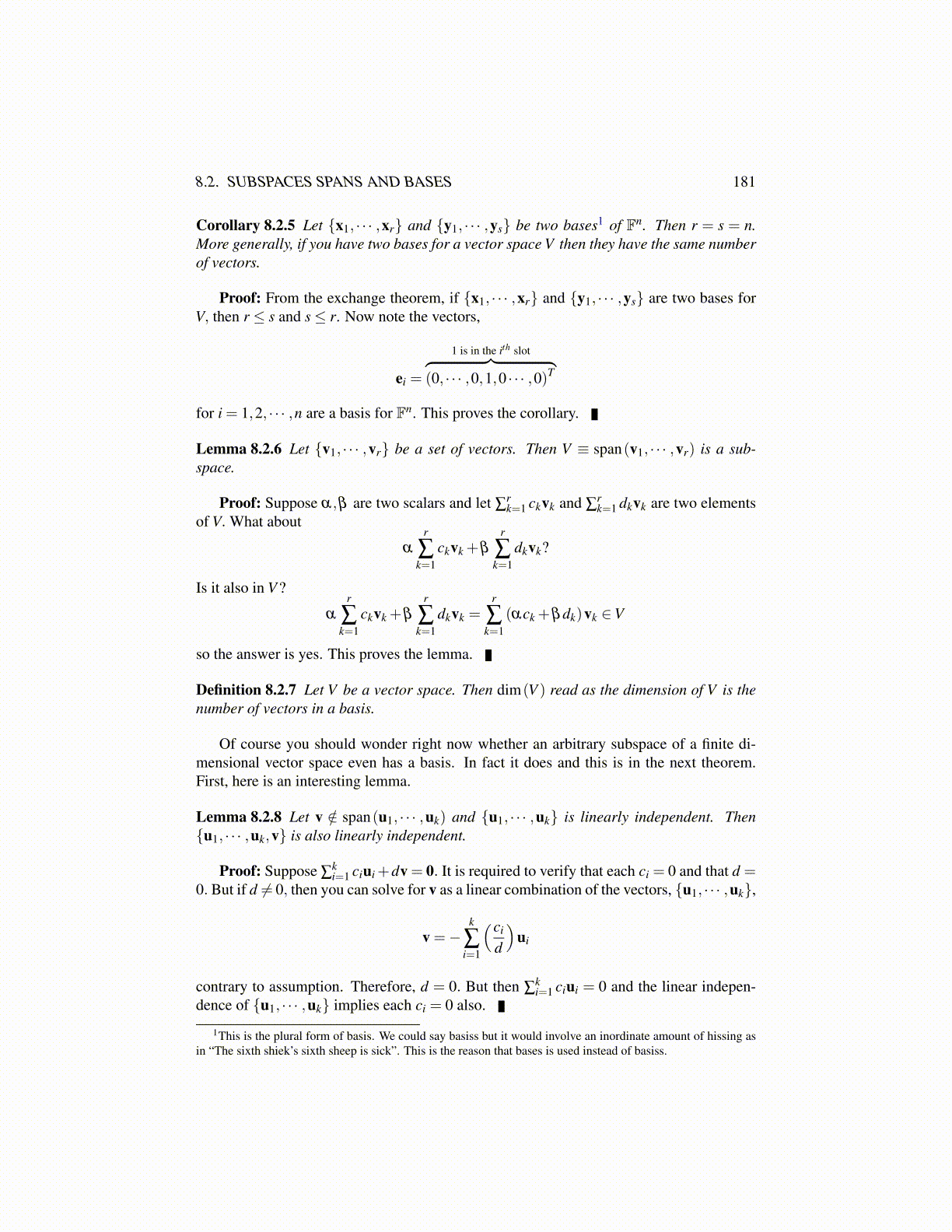
8.2. SUBSPACES SPANS AND BASES 181
Corollary 8.2.5 Let {x1, · · · ,xr} and {y1, · · · ,ys} be two bases1 of Fn. Then r = s = n.More generally, if you have two bases for a vector space V then they have the same numberof vectors.
Proof: From the exchange theorem, if {x1, · · · ,xr} and {y1, · · · ,ys} are two bases forV, then r ≤ s and s≤ r. Now note the vectors,
ei =
1 is in the ith slot︷ ︸︸ ︷(0, · · · ,0,1,0 · · · ,0)T
for i = 1,2, · · · ,n are a basis for Fn. This proves the corollary.
Lemma 8.2.6 Let {v1, · · · ,vr} be a set of vectors. Then V ≡ span(v1, · · · ,vr) is a sub-space.
Proof: Suppose α,β are two scalars and let ∑rk=1 ckvk and ∑
rk=1 dkvk are two elements
of V. What about
α
r
∑k=1
ckvk +β
r
∑k=1
dkvk?
Is it also in V ?
α
r
∑k=1
ckvk +β
r
∑k=1
dkvk =r
∑k=1
(αck +βdk)vk ∈V
so the answer is yes. This proves the lemma.
Definition 8.2.7 Let V be a vector space. Then dim(V ) read as the dimension of V is thenumber of vectors in a basis.
Of course you should wonder right now whether an arbitrary subspace of a finite di-mensional vector space even has a basis. In fact it does and this is in the next theorem.First, here is an interesting lemma.
Lemma 8.2.8 Let v /∈ span(u1, · · · ,uk) and {u1, · · · ,uk} is linearly independent. Then{u1, · · · ,uk,v} is also linearly independent.
Proof: Suppose ∑ki=1 ciui +dv = 0. It is required to verify that each ci = 0 and that d =
0. But if d ̸= 0, then you can solve for v as a linear combination of the vectors, {u1, · · · ,uk},
v =−k
∑i=1
(ci
d
)ui
contrary to assumption. Therefore, d = 0. But then ∑ki=1 ciui = 0 and the linear indepen-
dence of {u1, · · · ,uk} implies each ci = 0 also.
1This is the plural form of basis. We could say basiss but it would involve an inordinate amount of hissing asin “The sixth shiek’s sixth sheep is sick”. This is the reason that bases is used instead of basiss.